Study
Abroad: Chile 2004
Months of preparations, readings and research papers
were over. The exhausting academic training at Evergreen State College was finally
complete. The long rainy days and cold nights were left behind. After 16 long
hours of flight, the group had finally arrived at the south of the world. They
were in Chile.
Most students in this program
studied for two quarters the historical political, economic, cultural, and
social struggles of Chile. The program provided students an unparalleled opportunity
to continue their academic work in a context that moved beyond the boundaries
of the classroom. Through the various activities the group engaged in, they
were now able to experience, more tangibly, the reality and diversity of the
issues facing Chile, as it establishes and asserts itself in an increasingly
dynamic world order, at the beginning of a new millennium.
The
Language School
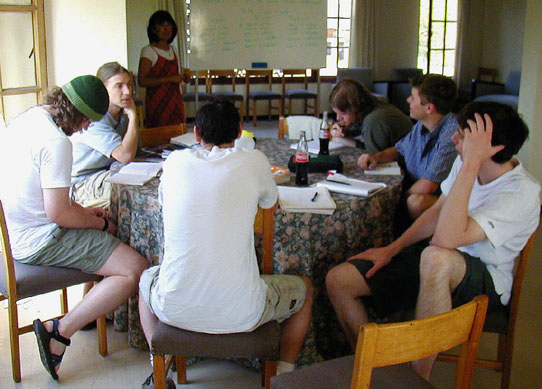 A
fundamental component of the program was an intensive language study, essential
to the students operating within the Chilean culture. The Spanish instructors,
Alexandra and Andrea, along with Dr. Gilbert, employed a strong pedagogical
approach to their teaching. The content of the Spanish classes focused on
facilitating the group in performing daily functions and in providing students
with the language capacity necessary to conduct the type of research they
were to accomplish.
A
fundamental component of the program was an intensive language study, essential
to the students operating within the Chilean culture. The Spanish instructors,
Alexandra and Andrea, along with Dr. Gilbert, employed a strong pedagogical
approach to their teaching. The content of the Spanish classes focused on
facilitating the group in performing daily functions and in providing students
with the language capacity necessary to conduct the type of research they
were to accomplish.
One of the methods the teachers chose was to immerse students in a real
world setting, requiring them to practice their language skills outside
of the classroom, with teacher assistance and guidance. Using this approach,
the students divided into-groups according to their level of knowledge of
the Spanish language visiting street fairs, museums, cultural, educational
and industrial centers.
The students then conducted social and cultural research using the skills
acquired in these classes. This pedagogical approach brought the group closer
to the people and immersed then into the culture of Chile in a way that
would otherwise have been more complicated to achieve.
While staying in Santiago, the country's capitol city, the students were
able to visit some of the most important and interesting places in Chile.
The following are descriptions of a few of the places and people students
visited while staying in Santiago, the country's capitol city.
The
Presidential Palace
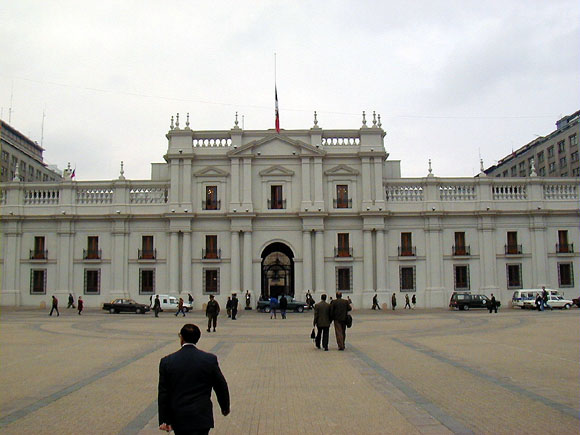 The
first official activity of the program consisted of a visit to the Presidential
Palace, commonly known, as La Moneda.
The
first official activity of the program consisted of a visit to the Presidential
Palace, commonly known, as La Moneda.
Dressed formally, and accompanied by Spanish language teachers, students
walked the main areas of the Presidential Palace, while a stuff member introduced
them to architecture, art, history and political functions of each of the
building's many sections. The visit to La Moneda put in place several historical,
cultural and political elements the students had previously studied in preparation
to their departure to Chile.
Vineyard
Cousiño Macul
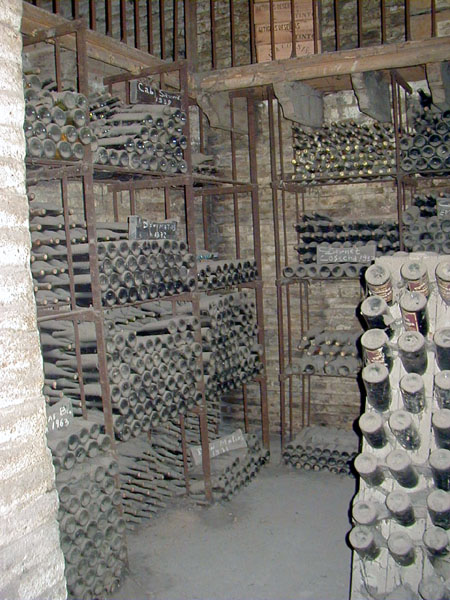 Students
also visited Viña Cousiño
Macul, a prestigious winery created around the middle of the nineteenth-century
(1856), with vines brought from France. Today, wine production is an important
economic activity of Chile. Wine and other agricultural exports generate
many jobs and are essential to the country's economic growth. Chilean red
wines, mainly Merlots, are highly appreciated not only, for their delightful
flavors but also, for their antacid elements, which help to prevent heart
disease.A tour to the physical plant of the vineyard included a historical
explanation of wine production. The group also listened to Information about
the distillation, bottling and commercialization of the different types
of wines produced in Chile.
Students
also visited Viña Cousiño
Macul, a prestigious winery created around the middle of the nineteenth-century
(1856), with vines brought from France. Today, wine production is an important
economic activity of Chile. Wine and other agricultural exports generate
many jobs and are essential to the country's economic growth. Chilean red
wines, mainly Merlots, are highly appreciated not only, for their delightful
flavors but also, for their antacid elements, which help to prevent heart
disease.A tour to the physical plant of the vineyard included a historical
explanation of wine production. The group also listened to Information about
the distillation, bottling and commercialization of the different types
of wines produced in Chile.
Trip
to the North
In addition to the many
other activities in Santiago, the program traveled to the northern port of
Coquimbo, to experience yet another aspect of the Chilean culture and economy.
The group stayed in a place called La Herradura (Horseshoe), a picturesque
area that served as a center of operation for the program's busy agenda.
After a visit to the Port and Fish Market of Coquimbo, the group toured the
entire Bay of La Herradura in the Octopus, a scientific research boat belonging
to the Marine Biology School at the Catholic University of Chile. The Octopus
does monitoring of the worming effects of El Niño y la Niña
in that area of the Pacific. The tour allowed young scholars from the group
interested in marine biology, environmental studies and ecology to grasp information
and knowledge about coastal Chile.
Program activities in Coquimbo and La Serena started
with a visit to the Mineralogical Museum Ignacio
Domeyko, a branch of the Mining & Engineering Department of the University
of La Serena.
The Museum has almost 7000 mineralogical samples
collected from different mining districts from the region, the country and
from abroad. Clusters of silver from Chañarcillo, original gold minerals
from the Indio mine and Lapislázulis in Chile, can be fund in addition
to diamonds from Brazil and South Africa.
The volume and quality of the minerals found in
the Museum, who's origan goes back to the creation of the School of Mines
in 1887, by the Polish scientist Ignacio Domeyko, provides an attractive cultural
center for education, cultural diffusion and tourism.
El
Romeral
 The
next academic activity consisted of a visit to the important iron-mining center
"El Romeral". Located North
of La Serena, close to the side hills of Los Andes, El Romeral Mine supplies
fines, lumps and pellets feed to the domestic and foreign markets. Its proven
reserves amount to 44,5 million tons with an average iron content of 49.1%
and a cut-off grade of 30% magnetic iron.
The
next academic activity consisted of a visit to the important iron-mining center
"El Romeral". Located North
of La Serena, close to the side hills of Los Andes, El Romeral Mine supplies
fines, lumps and pellets feed to the domestic and foreign markets. Its proven
reserves amount to 44,5 million tons with an average iron content of 49.1%
and a cut-off grade of 30% magnetic iron.
In addition to the mines, El Romeral has maritime
concessions, industrial and port installations, fixed and mobile equipment,
land and buildings. It also owns water distribution, concessions and rights
of way necessary for its business.
 The
Port of Guayacán, located in the Herradura Bay, is equipped with installations
for attending ships of up to 315 meters length, 16.2 meters draught and 50
meters beam. Mining products are shipped from this port to several steel-mills
worldwide, the Japanese market being the most important. Other markets are
South Korea, Indonesia, Malaysia, Unites States, Germany, Belgium and China.
The
Port of Guayacán, located in the Herradura Bay, is equipped with installations
for attending ships of up to 315 meters length, 16.2 meters draught and 50
meters beam. Mining products are shipped from this port to several steel-mills
worldwide, the Japanese market being the most important. Other markets are
South Korea, Indonesia, Malaysia, Unites States, Germany, Belgium and China.
Valle
de Elqui
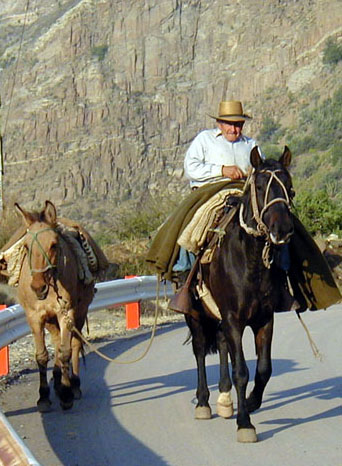 Starting
in the city of La Serena, traveling along route 41, or International Highway
Gabriela Mistral, the Evergreen Students had the opportunity to know and visit
Valle de Elqui or Valley of Elqui. Along this
route there exists some interesting panoramic views, where one can see parched
hills, rising from both sides, revealing a lush valley at the center. Also
in view the highway, which snakes through the scenery, beckoning one to continue
on toward the cordillera of the Andes.
Starting
in the city of La Serena, traveling along route 41, or International Highway
Gabriela Mistral, the Evergreen Students had the opportunity to know and visit
Valle de Elqui or Valley of Elqui. Along this
route there exists some interesting panoramic views, where one can see parched
hills, rising from both sides, revealing a lush valley at the center. Also
in view the highway, which snakes through the scenery, beckoning one to continue
on toward the cordillera of the Andes.
The name of the town is derived from the main
product of the region, pisco. Pisco is a grape
brandy of high alcoholic grade, and is produced in this valley from grapes
that are grown there as well. According to Chilean law, the production of
pisco is limited to certain northern regions of the country, where it is the
main, if not sole, product. It is, therefore, a significant part of the lives
of the people in this region.
Students had the opportunity to visit a pisquera,
or factories where pisco is produced. With one section utilizing traditional
methods and equipment for production, and the other modern, students were
allowed a window into the process of the development and modernization of
production in Chile.
Andacollo
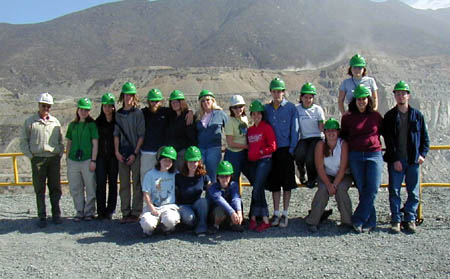 Fifty-six
kilometers South of La Serena is the located the mining town of Andacollo.
With a population of 14.082 and surface of 496 square kilometers, the economy
of Andacollo is based on small and medium mining activities being gold, silver
and copper the most important ones.
Fifty-six
kilometers South of La Serena is the located the mining town of Andacollo.
With a population of 14.082 and surface of 496 square kilometers, the economy
of Andacollo is based on small and medium mining activities being gold, silver
and copper the most important ones.
Andacollo is built up between two hills, in the
corner of a cliff which is part of the last ramifications of the Andes, 1.100
meters above see level. Its whole-year-sunny climate and its clean skies fully
decorated with stars during the night, make Andacollo a pleasant place to
visit.
The economy of Andacollo includes an
intense extractive process of minerals by a small group of miners, better
known as pirquineros, or small co-ops. Their production of gold, silver and
copper are processed using old techniques utilized by the Incas, who inhabited
the region before the Spanish arrival.
The development of the small and medium
mining sectors was accompanied by the utilization of the MARAY, an old pre-Hispanic
system used to grind minerals. This technique works with a cylindrical grinding
stone that revolves manually within a large bowl that was first made out of
stone and later out of concrete. This technique was widely utilized during
the 1935-1936 for gold extraction. Today it is still used by some small local
miners.
TRAPICHE is a mechanical system used in mining
extraction to grind different minerals such as gold, silver and copper. This
system has been used since the end of the 19th century.
Religiosity of the people of Andacollo has been
evident since the creation of the town. Every first
Sunday of October people gather together in a well-known procession to carry
Virgin de Andacollo from its historical Basilica built in 1893 to a place
where religious dances are performed. Today,
this religious celebration gathers almost 80.000 people from the region and
the rest of the country.
first
Sunday of October people gather together in a well-known procession to carry
Virgin de Andacollo from its historical Basilica built in 1893 to a place
where religious dances are performed. Today,
this religious celebration gathers almost 80.000 people from the region and
the rest of the country.
Between December 23 and 27 of every year people
from Andacollo, celebrate another religious festivity. This time, the Fiesta
Grande of La Virgen del Rosario. The figure of Virgin of Andacollo is carried
to a sanctuary where inhabitants of Andacollo and from other region of Chile
pray, dance and bring offerings to the Virgin. This festivity has also become
an attractive tourist and cultural event, sometimes exceeding the capacity
of the town to host all of the visitors.
Tongoy
 From
the Andes the group traveled back to the Pacific Ocean, to a town called Tongoy.
This is an old coastal fishing area surrounded by summer residences and newly
developed resorts. Tongoy comes alive during the months of September to February
(Spring and Summer in Chile). The rest of the year the town becomes very quiet
and the only economic activity is fishing done by the local fisherman who sell
their products in La Serena and Coquimbo.
From
the Andes the group traveled back to the Pacific Ocean, to a town called Tongoy.
This is an old coastal fishing area surrounded by summer residences and newly
developed resorts. Tongoy comes alive during the months of September to February
(Spring and Summer in Chile). The rest of the year the town becomes very quiet
and the only economic activity is fishing done by the local fisherman who sell
their products in La Serena and Coquimbo.
Conclusion
These examples are only a few that represent the diversity and quality of the
invaluable academic experiences, as well as life experiences, for participants
in this Study Abroad Program to Chile.
This program is an excellent opportunity for students to gain a powerful dimension
in their professional and personal lives, the firsthand knowledge and experience
of another culture, another reality; the experience of Chile
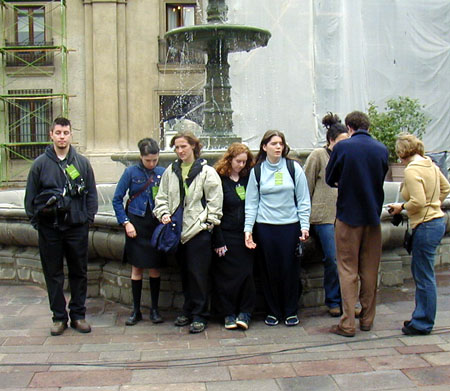
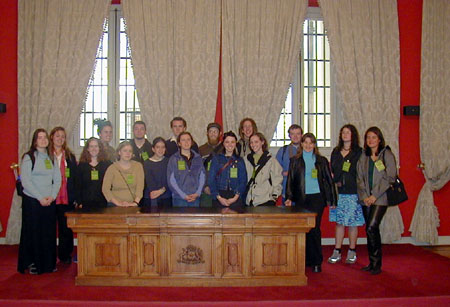


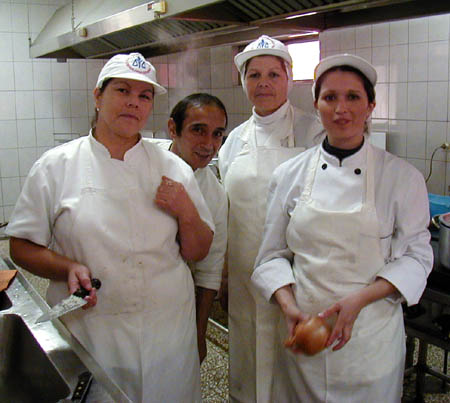
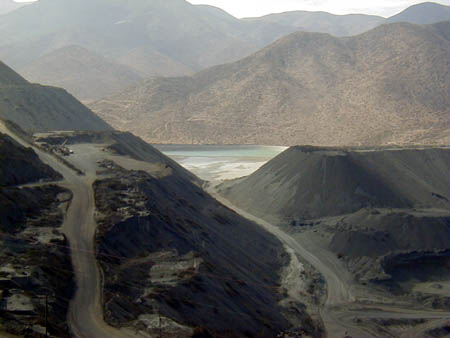
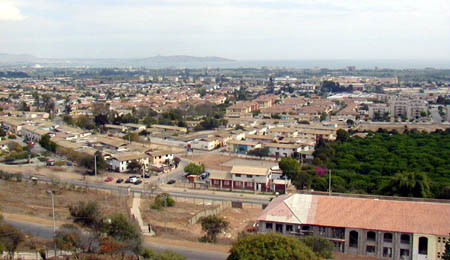

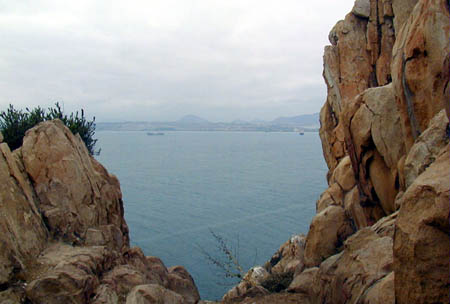



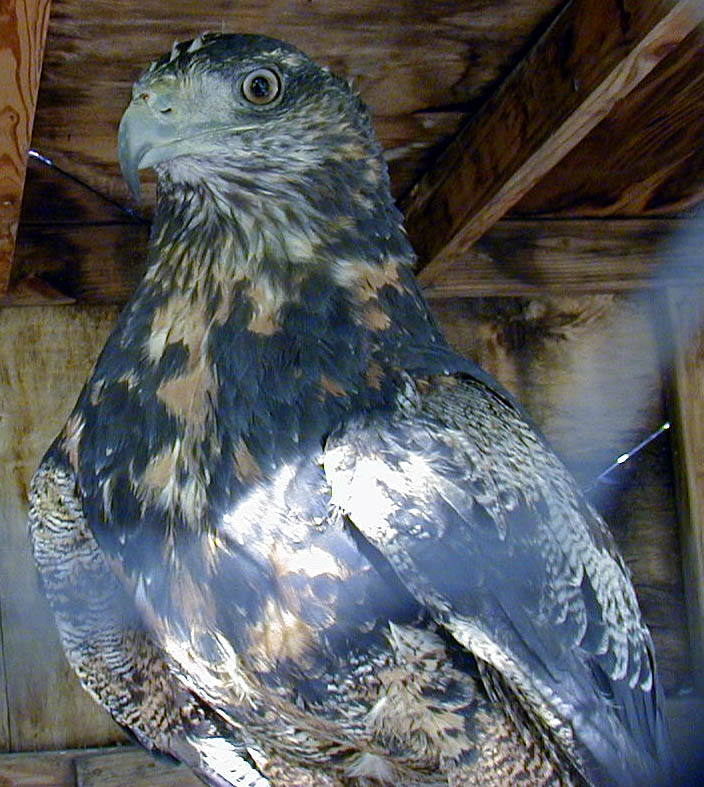
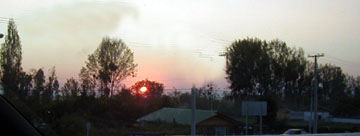
 A
fundamental component of the program was an intensive language study, essential
to the students operating within the Chilean culture. The Spanish instructors,
Alexandra and Andrea, along with Dr. Gilbert, employed a strong pedagogical
approach to their teaching. The content of the Spanish classes focused on
facilitating the group in performing daily functions and in providing students
with the language capacity necessary to conduct the type of research they
were to accomplish.
A
fundamental component of the program was an intensive language study, essential
to the students operating within the Chilean culture. The Spanish instructors,
Alexandra and Andrea, along with Dr. Gilbert, employed a strong pedagogical
approach to their teaching. The content of the Spanish classes focused on
facilitating the group in performing daily functions and in providing students
with the language capacity necessary to conduct the type of research they
were to accomplish. The
first official activity of the program consisted of a visit to the Presidential
Palace, commonly known, as La Moneda.
The
first official activity of the program consisted of a visit to the Presidential
Palace, commonly known, as La Moneda.  Students
also visited
Students
also visited  The
next academic activity consisted of a visit to the important iron-mining center
"
The
next academic activity consisted of a visit to the important iron-mining center
" Fifty-six
kilometers South of La Serena is the located the mining town of
Fifty-six
kilometers South of La Serena is the located the mining town of  first
Sunday of October people gather together in a well-known procession to carry
Virgin de Andacollo from its historical Basilica built in 1893 to a place
where religious dances are performed. Today,
this religious celebration gathers almost 80.000 people from the region and
the rest of the country.
first
Sunday of October people gather together in a well-known procession to carry
Virgin de Andacollo from its historical Basilica built in 1893 to a place
where religious dances are performed. Today,
this religious celebration gathers almost 80.000 people from the region and
the rest of the country. From
the Andes the group traveled back to the Pacific Ocean, to a town called Tongoy.
This is an old coastal fishing area surrounded by summer residences and newly
developed resorts. Tongoy comes alive during the months of September to February
(Spring and Summer in Chile). The rest of the year the town becomes very quiet
and the only economic activity is fishing done by the local fisherman who sell
their products in La Serena and Coquimbo.
From
the Andes the group traveled back to the Pacific Ocean, to a town called Tongoy.
This is an old coastal fishing area surrounded by summer residences and newly
developed resorts. Tongoy comes alive during the months of September to February
(Spring and Summer in Chile). The rest of the year the town becomes very quiet
and the only economic activity is fishing done by the local fisherman who sell
their products in La Serena and Coquimbo.